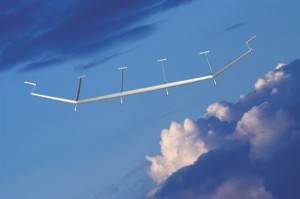 Now The Boeing Company has signed an agreement with the U.S. Defense Advanced Research Projects Agency (DARPA) to develop and fly the SolarEagle unmanned aircraft for the Vulture II demonstration program. Under the terms of the $89 million contract, SolarEagle will make its first demonstration flight in 2014. Boeing isn’t the only company interested solar powered aircraft. The Cri-Cri is the world’s smallest electric plane recently made its official maiden flight at Le Bourget airport near Paris. Earlier this summer in Payerne, Switzerland – An experimental solar-powered plane completed its first 24-hour test flight successfully, proving that the aircraft can collect enough energy from the sun during the day to stay aloft all night.The test brings the Swiss-led project one step closer to its goal of circling the globe using only energy from the sun. Pilot Andre Borschberg eased the Solar Impulse out of the clear blue morning sky onto the runway at Payerne airfield.
Now The Boeing Company has signed an agreement with the U.S. Defense Advanced Research Projects Agency (DARPA) to develop and fly the SolarEagle unmanned aircraft for the Vulture II demonstration program. Under the terms of the $89 million contract, SolarEagle will make its first demonstration flight in 2014. Boeing isn’t the only company interested solar powered aircraft. The Cri-Cri is the world’s smallest electric plane recently made its official maiden flight at Le Bourget airport near Paris. Earlier this summer in Payerne, Switzerland – An experimental solar-powered plane completed its first 24-hour test flight successfully, proving that the aircraft can collect enough energy from the sun during the day to stay aloft all night.The test brings the Swiss-led project one step closer to its goal of circling the globe using only energy from the sun. Pilot Andre Borschberg eased the Solar Impulse out of the clear blue morning sky onto the runway at Payerne airfield.
“SolarEagle is a uniquely configured, large unmanned aircraft designed to eventually remain on station at stratospheric altitudes for at least five years,” said Pat O’Neil, Boeing Phantom Works program manager for Vulture II. “That’s a daunting task, but Boeing has a highly reliable solar-electric design that will meet the challenge in order to perform persistent communications, intelligence, surveillance and reconnaissance missions from altitudes above 60,000 feet.”
During testing, the SolarEagle demonstrator will remain in the upper atmosphere for 30 days, harvesting solar energy during the day that will be stored in fuel cells and used to provide power through the night. The aircraft will have highly efficient electric motors and propellers and a high-aspect-ratio, 400-foot wing for increased solar power and aerodynamic performance.
